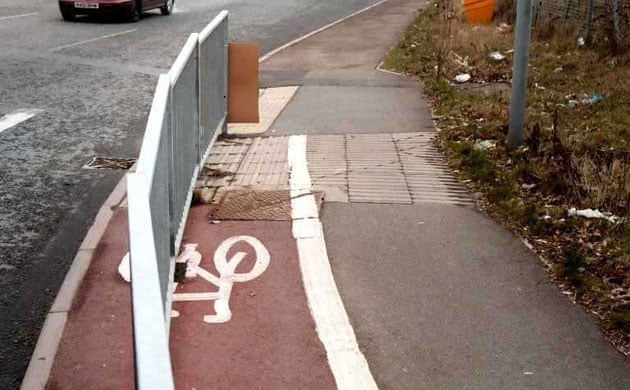A guy in my neighborhood rides an old Raleigh three-speed--based on its graphics, I'd guess that it's from the 1960s--to the stores, the laundromat and, I imagine, anyplace else he has to be.
I know nothing about the man: He talks to no one. I'd guess that he is a bit older than I am. Perhaps he's retired, whether or not by choice. There's a good chance he's living alone, or with a roommate in a similar circumstance. Is he widowed or divorced--or did he never marry? Did his kids move away, or did he never have any? Does he live in an apartment he moved into when the city still had rent control, or is he in other housing circumstances, for better or worse?
I see him--a gaunt, Ichabod Crane-like figure in aviator glasses--pedaling, at a fairly brisk clip, all over the neighborhood on that bike, with a dropped handlebar turned upside down. (The drops are closer to the saddle than the grip area of the original upright bars, which allows for a more upright riding position.) Most of the other parts seem to be original, including the wheels (with a Sturmey Archer three-speed hub on the rear), but I don't think the tires have matched in the last thirty years or so.
Once, I was about to take a picture of that bike but the man appeared, obviously not pleased. Though I'm something of a voyeur, I respected the man's wish for privacy or whatever. So all you have is my description, however thin, of him and his bike.
An article I read reminded me of that man and his bike. The subject of the story was not as anonymous as the man in my neighborhood because, well, he couldn't be: He was a high-ranking executive in a large regional bank. All of his colleagues and subordinates knew that he pedaled to his office every day, in all conditions, including an ice storm that seemed to expanded the Wollman Rink to include the rest of Central Park. On another occasion, someone jokingly asked him whether he'd ridden his bike through that day's snowstorm. In all sincerity, he replied, "Yes. Do you want to borrow it?"
Robert G. Wilmers, the CEO of M&T Bank, got a flat on his way to work. By the time he was ready to ride home, someone had fixed it for him. He did, however, suffer a fate of too many New York cyclists: One night, he came out of his office building to find the bike's frame, sans parts, chained up where he'd left it that morning.
 |
| Robert G. Wilmers' bike on display in Seneca One Tower, Buffalo, New York. |
Given that last anecdote, it's understandable that his old black Ross was what some would describe as a "Frankenbike." The tires almost never matched and the parts where not always what one might expect to find on such a bike. He seemed not to care, though: For him, his bike, equipped with a front basket, was transportation, nothing more, nothing less, never mind that it seemed to clash, if you will, with the well-tailored suits he wore.
He continued to ride almost to the end of his life at age 83, five years ago. Now his bike is on display in the lobby of Seneca One, the Buffalo, New York tower where M & T has a significant presence. The bank was founded and is still headquartered in "The Queen City" and, although Wilmers lived in worked in New York City, people who knew him say he would have approved of not only the bike's new location, but the occasion for its installation: About 175 volunteers from M&T and other Seneca tenants have assembled 50 youth bikes that will be given to children to help them get to school and simply enjoy riding.
In other words, they're helping the kids ride the way Wilmers did. For him, for them and for the man in my neighborhood, it's not about the bike--or themselves.








